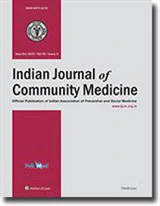Development and Use of a Reproducible Framework for Spatiotemporal Climatic Risk Assessment and its Association with Decadal Trend of Dengue in India

Section Snippets
Introduction
Spatiotemporal and machine learning approaches areincreasingly used to understand the epidemiology ofinfectious diseases. The development of infectious disease models in low-andmiddle-income countries is faced with challengesof obtaining high- resolution data on climatic riskvariation from on-ground meteorological stations. Globaland National intersectoral initiatives provide satelliteimagery-based Analysis Ready Datasets (ARDs) andglobal climatic models through multiple sources. The study aimed to develop a reproducible, open‑source, and scalable framework for extracting climate data from satellite imagery, understanding dengue’s decadal trend in India, and estimating the relationship between dengue occurrence and climatic factors.
Materials and Methods:
The study was carried out in two phases. The first phaseincluded exploring and developing a reproducible frameworkfor research-level satellite imagery bulk preprocessing. Thesecond phase included ecological analysis of publicly availabledengue occurrence data and climatic variables obtained usingthe developed framework. A framework was developed in the Open Source Software, and it was empirically tested using reported annual dengue occurrence data in India during 2010–2019. Census 2011 and population projections were used to calculate incidence rates. Zonal statistics were performed to extract climate parameters. Correlation coefficients were calculated to estimate the relationship of dengue with the annual average of daily mean and minimum temperature and rainy days.
Results:
Total 818,973 dengue cases were reported from India, with median annual incidence of 6.57 per lakh population; it was high in 2019 and 2017 (11.80 and 11.55 per lakh) and the Southern region (8.18 per lakh). The highest median annual dengue incidence was observed in Punjab (24.49 per lakh). Daily climatic data were extracted from 1164 coordinate locations across the country for the decadal period (4,249,734 observations). The annual average of daily temperature and rainy days positively correlated with dengue in India (r = 0.31 and 0.06, at P < 0.01 and 0.30, respectively).
Conclusion:
The study provides a reproducible algorithm for bulk climatic data extraction from research‑level satellite imagery. Infectious disease models can be used to understand disease epidemiology and strengthen disease surveillance in the country.